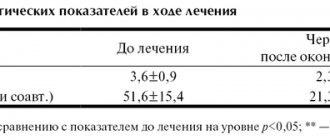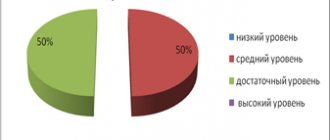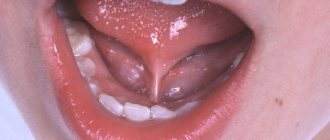Dysarthria is a pathology of speech function in which the transmission of excitation to the articulatory muscles is disrupted and the nuclei of the bulbar nerves are affected. There are many reasons for this condition, but in any case, the clinical picture includes pathology of speech motor skills, defective pronunciation of sounds, changes in voice, incorrect placement of stress in words, and in the most complex cases, severe dysarthria leads to a complete loss of sound reproduction function.
Diagnosis of the condition includes not only an assessment of the severity of dysarthria, but also research into the underlying disease that caused it.
Neurologists and speech therapists are still actively discussing a generally accepted classification of dysarthria, but consensus has not yet been reached.
The classification of dysarthria, which is based on the localization of the pathological focus, includes the following types:
- Bulbar dysarthria - associated with the involvement in the pathological process of the nuclei of the cranial nerves, which are localized in the medulla oblongata;
- Pseudobulbar dysarthria - in which the pathology concerns the pathways that connect the motor centers of the cortex with the nuclei of the bulbar nerves;
- Subcortical dysarthria - in which the subcortical nuclei of the brain are affected;
- Cerebellar dysarthria – pathology of the cerebellum and its pathways;
- Cortical dysarthria is a focal pathology of the cerebral cortex itself.
The classification of dysarthria according to the degree of severity divides it into erased, mild, moderate and severe dysarthria.
The Yusupov Hospital has been successfully treating patients with this type of pathology for many years. Doctors get tremendous results not only with erased dysarthria, but also with severe dysarthria. The approach to diagnosis and treatment differs in the quality of equipment, the specialization of doctors and the attitude of medical staff. At the Yusupov Hospital, all employees understand the responsibility they take on and how difficult it is for their patients, so they treat everyone with kindness and compassion. The Yusupov Hospital operates around the clock and helps at any time of the day or night. You can sign up for a consultation by phone or online.
Causes of dysarthria
There are many reasons for the development of dysarthria. In general, it all comes down to the following pathogenetic mechanisms:
- Brain hypoxia;
- Birth injury;
- Infectious lesion of the brain;
- Neoplasm of the brain;
- Intracerebral hematoma;
- Traumatic brain injury;
- Degenerative brain lesions, etc.
Brain hypoxia can occur due to many reasons. If the mother has suffered a serious illness, there is a Rh conflict, severe toxicosis, then hypoxia develops in utero. In adults, oxygen starvation of the brain is caused by the progression of diseases such as atherosclerosis, diabetes mellitus, hypertension, etc. In this case, clinical manifestations gradually progress. In the case of a stroke, the clinical picture appears suddenly.
Traumatic injuries are the number one cause in children after one year and young adults. In the event of a brain injury, hematomas may occur, the brain matter may be crushed, impulse pathways may be disrupted, etc. Very often, to eliminate the pathology, it is necessary to perform a neurosurgical operation.
Infectious lesions lead to a diffuse inflammatory process in the brain. Degenerative – to degeneration and death of connecting structures.
Birth trauma causes damage to brain structures with subsequent disturbances in structure and function.
Different degrees of dysarthria have their own characteristics.
Features of erased dysarthria
Erased dysarthria is a pathology in which mild disturbances of nerve conduction of the organs of articulation are observed. Patients have mild disturbances in sound production and stress placement defects. Speech with erased dysarthria is not clear and unexpressive. Patients have difficulties with sound reproduction of certain phonetic groups and with their automation. This form is most common among children. Signs of dysarthria are also observed in writing - handwriting with dysarthria is illegible, and children write slowly.
Erased dysarthria is diagnosed by determining the neurological and speech therapy status.
Depending on the location of the lesion, clinical manifestations also differ. With erased cortical dysarthria, only phonetics is disturbed, with preservation of phonetics and correct stress, since only a section of the cortical center is affected.
In case of damage to the nuclei and ganglia, pronounced disturbances in stress are observed, but disturbances in perception and the production of sounds are practically preserved, or are slightly impaired.
Pseudobulbar dysarthria leads to a uniform disturbance of all components of speech, since the conduction pathways from the cortex to the bulbar nuclei are affected.
The mixed form often includes a defect in sound pronunciation and differences in sounds.
A mild degree of erased dysarthria is characterized by minimal manifestations of pronunciation and stress defects and quite often goes unnoticed. But with a thorough examination by a specialist, the pathology is established. Correction of mild degrees of erased dysarthria includes breathing exercises, finger and articulation exercises, speech therapy and general massage, speech correction, etc.
ROSTOV REGIONAL CLINICAL HOSPITAL
More than 50 percent of strokes are accompanied by speech disorders of varying severity. A stroke can deprive the patient, in whole or in part, of the most important and most familiar way of communication - speech. Those around them cease to understand their loved one, he himself is burdened by the inability to express his feelings, desires and needs.
Speech therapists-aphasiologists from the Neurological Department for patients with acute cerebrovascular accidents of the Rostov Regional Clinical Hospital help in the following cases:
- speech disorders in any form of aphasia and dysarthria;
- reading, writing and counting disorders;
- tone of the facial and articulatory muscles (speech therapy and acupressure);
- speech breathing, overcoming stutter-like hesitations (breathing exercises, logorhythmics);
- swallowing dysfunction (dysphagia).
Aphasia
Aphasia is a systemic speech disorder caused by local damage to certain speech areas of the brain.
In patients with aphasia, oral speech itself, perception and understanding of addressed speech, internal speech, reading and writing suffer. The auditory, motor, personal spheres, and mental processes also suffer.
Aphasia is one of the most complex disorders. To overcome it, early speech therapy rehabilitation of patients is required.
How speech recovery occurs in aphasia.
Stimulating and disinhibiting methods are used:
- conversations on everyday and professional topics;
- counting, days of the week, months in order;
- finishing proverbs and phrases;
- answering questions with “yes” and “no”;
- global reading and writing.
Recovery depends on the patient's age, mental and speech status, and type of disorder.
Practice shows that timely speech restoration, a professional approach, and correctly and individually selected methods give positive results.
Dysarthria
Dysarthria is a pronunciation disorder caused by poor innervation of the muscles of the articulatory apparatus.
The tongue, lips, and soft palate become inactive and the person not only speaks poorly, but also experiences difficulty retaining saliva and air in the mouth.
To restore correct pronunciation, it is necessary to perform articulatory gymnastics.
Dysphagia
Dysphagia is a swallowing disorder often seen after stroke. A speech therapist also deals with the correction of this disorder, but he needs the help of the patient himself or his relatives.
Tips for relatives caring for a patient with a swallowing disorder:
- Never feed a bedridden patient.
- Give only small amounts of food at a time.
- Never tilt the patient's head back while feeding.
- Do not give drinks with food. Drinks should be given before or after.
- Food and drink should always look and smell appetizing.
Enough time should be allowed for meals. It is important that the patient feels safe and enjoys the meal.
Features of mild dysarthria
With a mild degree of dysarthria, there are no gross violations. With 1st degree of dysarthria, articulatory motor skills are inaccurate and slow. The speech is understandable, but a certain defect is still noticeable. Due to the defect, communication is disrupted. Patients prefer to speak using short words and sentences. Neurotic disorders often occur due to speech impediments. In children in whom speech function is just beginning to develop, a diagnosis of mild dysarthria should be immediately treated to avoid general underdevelopment of speech function in the future. Untreated dysarthria will lead to impaired written speech in the future. If speech disorders in childhood are not corrected, in the long term this will lead to a delay in the child’s mental development. Children with mild dysarthria receive education in secondary schools.
There are no gross defects in chewing and swallowing, but choking and coughing are sometimes observed. The patient's facial expressions are usually not impaired.
Forms of dysarthria and their characteristics of the disorder (Table)
Dysarthria is a violation of the pronunciation side of speech due to insufficient innervation of the speech apparatus. With dysarthria, unlike aphasia, the mobility of the speech organs (soft palate, tongue, lips) is limited, which makes articulation difficult. In adults, dysarthria is not associated with a disorder of the speech system: hearing, reading and writing disorders. Often in childhood, dysarthria leads to impaired pronunciation of words and, as a consequence, impaired reading and writing, and sometimes general underdevelopment of the language. Detection of dysarthria requires a neurological examination, based on the results of which treatment and correction by a speech therapist will be prescribed.
Table of the main forms of dysarthria and their characteristics of the disorder
| Characteristics, violations | Main forms of dysarthria | |||
| Spastic-paretic dysarthria | Spastic-rigid dysarthria | Hyperkinetic dysarthria | Atactic dysarthria | |
| 1. Leading syndrome | Spastic paresis | Spastic paresis and tonic disorders of speech control such as rigidity | Hyperkinesis | Ataxia |
| 2. Form of cerebral palsy | Spastic diplegia, hemiparesis | Double hemiplegia | Hyperkinetic form of cerebral palsy | Atonic-astatic form of cerebral palsy |
| 3. Nature of muscle tone disorder | Spasticity, less often - hypotension | Muscle spasticity and rigidity (maximum sharp increase in muscle tone throughout the speech and skeletal muscles, aggravated by external stimuli) | Dystonia, less often hypotension (major) dependence of tone on external influences, emotional state, voluntary movements. | Hypotension |
| 4. The presence of involuntary violent movements and synkinesis | Synkinesis, oral synkinesis. Reflexes of oral automatism may be preserved. | Frequent presence of brainstem synkinesis and oral automatisms (forceful sucking and licking movements) | Hyperkinesis of the tongue, face, neck; synkinesis. | Tremor of the tongue (with purposeful movements) |
| 5. Violations of articulatory motor skills, articulatory praxis, facial expressions. | Decreased volume and amplitude of articulatory movements of the tongue and lips (of varying degrees). Performing and maintaining articulatory postures may be affected (kinetic apraxia); switching from one articulation to another (kinetic apraxia). Facial hypomimia. | The volume of articulatory movements is strictly limited. Inclusion in movement - with an extended latent period (up to several minutes). When included in the movement, there is a sharp increase in tone in all speech and skeletal muscles. The tongue is tense, inactive, pushed back, and it is not always possible to remove it from the oral cavity. Lack of differentiation of labial and lingual movements (mixed labial-lingual articulation). Facial expressions are very poor (the face is frozen, mask-like). | The volume of articulatory movements may be sufficient. There are particular difficulties in maintaining and lowering an articulatory posture (kinesthetic apraxia) and when switching from one articulation to another, that is, the automation of articulatory movements suffers (kinetic apraxia). | Dysmetria (disproportion) of articulatory movements; more often – hypermetry (increased amplitude, exaggeration, slowness of movements). Difficulty performing and maintaining articulatory patterns (kinesthetic apraxia). Facial expressions are sluggish. |
| 6. The state of the act of eating (chewing, swallowing) | The act of eating is slow, but coordinated. The processes of chewing and swallowing are impaired (difficult) | Chewing, biting, and swallowing are grossly impaired. Chewing is often replaced by sucking. Coordination between breathing, chewing and swallowing is impaired. | The processes of chewing and swallowing are difficult and discoordinated | Chewing is weakened |
| 7. Speech intelligibility. Pronunciation problems | Speech intelligibility is reduced (to varying degrees). In severe cases, there may be a disturbance (blurredness) in the sound pronunciation of all groups. Vowel averaging. The pronunciation of front-lingual sounds (whistling, hissing, sonorants) suffers. The difference between dull - voiced, hard - soft sounds is often erased (more often - palatalization). Closing labial sounds are impaired. | Speech intelligibility is significantly reduced, and speech is often difficult to understand without knowing the context. Speech sounds lack a clear phonetic design. Unintelligibility of consonants. Vowel averaging. Weakness of differentiation of labial, dental; hard - soft, voiced - deaf. | Intelligibility is reduced (speech is slurred, blurred, and sometimes difficult to understand). Characterized by the absence of stable violations of sound pronunciation (omissions, substitutions, mixing of sounds are not constant). Lots of distortion of sounds (frictional and sonorous). | Speech intelligibility is reduced. Frontal, labial, and plosive sounds are impaired. |
| 8. Breathing disorders | Speech breathing disorders (speech exhalation is shortened and exhausted, inhalation is shallow). | Severe breathing problems | Severe breathing problems | Asynergy – asynchrony of breathing, voice production and articulation |
| 9. Voice disorders | Voice of insufficient strength and sonority (weak, exhausted). There may be nasalization (nasal tone of voice). | The voice is quiet, dull, compressed, tense | The voice is tense, intermittent, vibrating, changing in pitch, strength, and sonority. There may be nasalization of the voice. | The voice is exhausted, fading towards the end of the phrase; with a nasal tint. |
| 10. Prosody disorders | The amplitude of voice modulations is reduced, there are no tempo-rhythmic interruptions necessary for lively intonation. The voice is poorly modulated, monotonous. The pace is slow. | There is almost no voice modulation. The timbre is poor. The pace is a little faster. | The melodic and intonation side of speech is disrupted, the emotional connotation is lost. Weak expression or absence of modulation (voice is monotonous, unmodulated) | There is almost no voice modulation. There is practically no intonation. The rhythm of speech is chanting. The pace is slow. |
| 11. Autonomic disorders | Hypersalivation (ptyalism, drooling) | Hypersalivation (ptyalism, drooling) | There is usually no drooling in “pure” hyperkinetic syndrome | There may be hypersalivation |
| Spastic-paretic dysarthria | Spastic-rigid dysarthria | Hyperkinetic dysarthria | Atactic dysarthria | |
Features of moderate dysarthria
The average severity of dysarthria is already characterized by gross defects in pronunciation, facial expressions, chewing and swallowing. Speech with this degree of dysarthria becomes inarticulate, blurred, and incomprehensible.
Children with moderate dysarthria are educated in specialized schools. After a certain time, relatives get used to it and begin to understand the patient’s speech. The facial expressions of a patient with moderate dysarthria are poor. In most cases, drooling is observed. Eating is difficult due to defects in chewing and swallowing.
Features of severe dysarthria
What is grade 3 dysarthria, and what its manifestations are, is easy to understand, since in severe dysarthria, the sound production function is completely or almost completely absent.
Level 3 dysarthria is characterized by the absence of speech function, mask-like facial expression, drooling, and severe disorders of chewing and swallowing. The patient's mouth is constantly open, the tongue does not move. Children are educated in special schools, where they master general education subjects according to an individual program.
Severity of dysarthria
Dysarthria in a child has 3 degrees of severity:
- Anarthria is the complete absence of voice and speech. Some inarticulate sounds are possible.
- Direct dysarthria. The child is able to use oral speech, but it is inarticulate, incomprehensible to others, there are gross violations of sound pronunciation, and breathing, voice and intonation expressiveness are also significantly impaired.
- Erased dysarthria. This type of disease occurs most often. The child does not stand out much among his peers, but at the same time he is quite awkward, quickly gets tired in the process of performing loads, and has persistent disorders in the pronunciation of sounds (mostly hissing and whistling). When speaking, the child’s problems with articulation are not clearly expressed, the lips move minimally.






